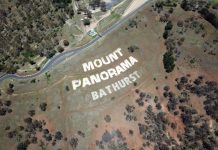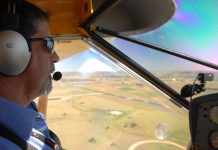- When re-covering a fabric-covered aircraft, the following must apply:
- The covering material doesn’t have to meet any particular specification as long as it is supplied as an aviation product.
- The covering material must be stronger than the original material.
- Materials used must meet the OEM specifications or comply with approved data such as EO or STC for an alternate system of covering.
- Fabric repair patches should be manufactured from thicker fabric compared to the material used to cover the surrounding structure.
- Covering practices (fabric) should be as follows:
- Fabric should be applied so that with the warp or fill threads are parallel to the line of flight.
- The method of attachment need not be identical to the original as far as strength and reliability are concerned.
- Only the blanket method is allowed for attaching the fabric.
- The envelope method may be used to attach the fabric if approved by the OEM.
- When re-covering or repairing a fabric-covered control surface, the following precautions apply:
- Statically balanced flight controls must be checked in accordance with the approved data following any fabric work.
- No control surface balance is needed on high-speed aircraft as they have enough momentum to preclude flutter.
- No control surface balance is needed on slow aircraft as they don’t fly fast enough to induce flutter.
- Wing flaps that are fabric covered also need to be balanced.
- Where would you locate the requirements for minimum equipment regarding anti-collision lights for an aircraft operated under night visual flight rules?
- In the flight manual, pilots operating handbook, or equivalent.
- As listed in the equipment list.
- In the Part 91 Manual of Standards (MOS 26.22).
- In CAO 100.5.
- Structural maintenance of composite structure aircraft can be carried out by:
- The holder of a B1 license with no further qualifications.
- The holder of a B1 license with a CASA-approved qualification working for a CAR 30 maintenance organization.
- An independent B1 license holder with a CASA-approved qualification not working for a CAR 30 organization.
- The holder of a B1 license with no further qualifications working for a CAR 30 maintenance organization.
- You notice a placard has become illegible. Where can you look for the required placard wording?
- In the aircraft flight manual (FM) or pilot operating handbook (POH) – including supplements.
- In the Type Certificate Data Sheet (TCDS).
- In the maintenance manual.
- Any of the above.
- Regarding maintenance of aircraft exhaust systems:
- A cracked exhaust system in light aircraft in the area of a cabin heater muff may introduce a poisonous gas (carbon monoxide) into the cabin which may disable the crew.
- Exhaust systems are very robust and only need a cursory visual inspection at the periodic inspection.
- A significant crack in an exhaust system will never cause a fire because the exhaust gas is not hot enough.
- Exhaust systems on turbo-charged aircraft are not susceptible to cracking as they are manufactured from inconel.
- What would be the most likely cause of low manifold pressure (boost) as the aircraft climbs and the pilot compensates by increasing throttle movement?
- The wastegate is stuck closed.
- The controller is sticking.
- The oil pressure is set too high.
- The wastegate is stuck open.
- In relation to structures and propellers, how is ‘composite’ defined?
- The item is manufactured from carbon fibre.
- The item is manufactured from foam with strengthening plywood embedded in it to provide strength.
- The item is made up of several parts or elements.
- The item is molded over a form and subjected to heat and pressure in an autoclave.
- Control surface flutter may be caused by:
- An underbalanced control surface.
- An overbalanced control surface.
- Control cables not tensioned correctly.
- Any of the above.
- Recently, CASA announced the first release of alpha-numeric aircraft registration marks.
- CASA did this because of pressure from industry to replicate the US system.
- CASA did this because the original registration combinations were running out.
- This allows for a total of four alpha-numeric combinations after the VH-, like other countries.
- All alphanumeric combinations became available in the first release.
To view the answers, go to the next page using the page navigation buttons below.





